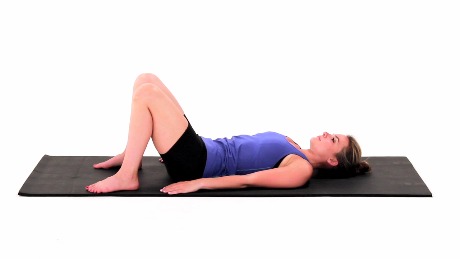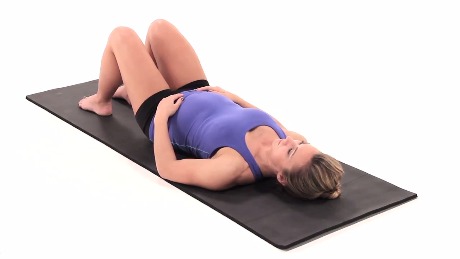Physical Therapist, PT, DPT, MTC // EW Pilates Instructor // EW CoreAlign Instructor // Certified in Dry Needling // EW Motion Therapy Homewood
When you experience pelvic floor pain, it is easy to feel uncomfortable and confused. Most people might only think of the pelvis as the large bone in the abdomen, but in reality, there is an entire network of muscles in and around the pelvis that can cause you pain when not working in sync. So, what do you do for pelvic pain? How can you feel better during your daily activities?
While pelvic pain can impede you from doing your favorite things, there are different therapies you can do to help lessen the pain and give you more freedom of movement. Physical therapy is one treatment option that can help you feel and move better. Our pelvic floor physical therapists at EW Motion Therapy can create a customized treatment plan for your specific needs so you can return to your favorite activities with less pain. Even if you do not choose physical therapy with us, we still want to educate you on pelvic pain and how physical therapy can help with your symptoms.
This article discusses some things that can cause pelvic pain, how pelvic pain affects movement, and how physical therapy can help. With this information, you can get the help you need and make the best decision for your health.
What can cause pelvic pain?
Various things can cause pelvic pain, but you should go to your doctor first to ensure you do not have a different issue. Your pelvic floor is the group of muscles surrounding your pelvis and the associated organs. If those muscles are not activating correctly, whether they are overstretched or too tight, that can cause pain. Also, just like you can hold tension in your shoulders or back if you are anxious, some people hold tension in their pelvic floor without realizing it, which can turn into pain if left unchecked for too long.
Some cases of trauma can cause pelvic pain, but again, it is essential to rule out causes with your doctor. Even if you are experiencing pain in your back or hips, you should get your pelvic floor checked out to make sure that the pain isn’t radiating from the pelvic floor to other areas.
How does pelvic pain affect movement?
Any pain can make movement more difficult. Because your pelvic floor is the base that holds all your core muscles together, doing anything with your core can be more painful if your pelvic floor is not functioning properly. This means sitting and standing can be painful, and you also may be guarding against the pain by changing your walking patterns and/or general movement patterns. While this can provide some relief in the short term, you could create some secondary issues down the road if you compensate elsewhere.
How can physical therapy help?
When you come to physical therapy for your pelvic floor pain, your physical therapist will focus on strengthening or relaxing your pelvic floor, depending on what dysfunction is present. They will look at hip strength/mobility, breathing patterns, and posture, as all of these can affect pelvic floor pain. They will also educate you on the importance of pelvic health in general and discuss your daily habits to figure out what stressors or activities could be causing your pain in the first place.
In some situations, pelvic pain is not only physical but also emotional, because issues related to pelvic floor dysfunction can get in the way of so many daily activities. It is vital to find a physical therapist who can be sensitive to the emotions surrounding your pain and offer as much emotional support as they can.
As part of your treatment plan, your therapist will also assign some home exercises for you to do outside of the clinic. Here are a few examples of some exercises our physical therapists have assigned for pelvic pain. If you wish to try these at home, check with your doctor first to ensure you can do them safely.
Supine Pelvic Floor Contraction: Begin lying on your back with your legs bent and feet resting on the ground. Exhale, and contract your pelvic floor muscles. Relax, inhale, and repeat. Make sure you are focused on the pelvic muscles and keep the buttock and thigh muscles relaxed.

Supine Pelvic Clock: Begin lying on your back with legs bent and feet flat on the floor. Imagine a clock lying flat on your pelvis with a ball at the center. Tilt your pelvis as if you were rolling the ball around the face of the clock in one direction. Then repeat in the other direction. Make sure to keep your movements concentrated just on your pelvis. The rest of your back should be flat against the ground.

Supine Diaphragmatic Breathing: Begin lying on your back with your knees bent and feet resting on the floor. Exhale, drawing in your abdominals as if you are pulling your belly button toward the floor, then inhale, focusing on expanding your belly instead of your chest. Make sure to keep your low back flat on the ground during the exercise.

How else should I care for my pelvic floor?
Now you know more about pelvic pain and how physical therapy can help. Pelvic health really is one of the keys to a healthy body, as your pelvic floor is the base of your core and is responsible for many aspects of daily functioning. Many people struggle with symptoms related to incontinence from pelvic floor dysfunction but avoid getting treatment for it or even talking about it, so it is much more of a widespread issue than you might think.
While you might not think of your pelvic floor as you go about your day, any pain or incontinence issue that arises will force you to think about it and seek treatment. Physical therapy can be an excellent treatment option to help you retrain those muscles and move more easily throughout your daily routine. Our physical therapists at EW Motion Therapy can work with you to develop a customized treatment plan that helps you work toward your goals and reduce your pain throughout the day. If you are interested in pelvic floor physical therapy with us, fill out the Request an Appointment form on our website, and someone from our staff will contact you within 48 hours with your next steps.


